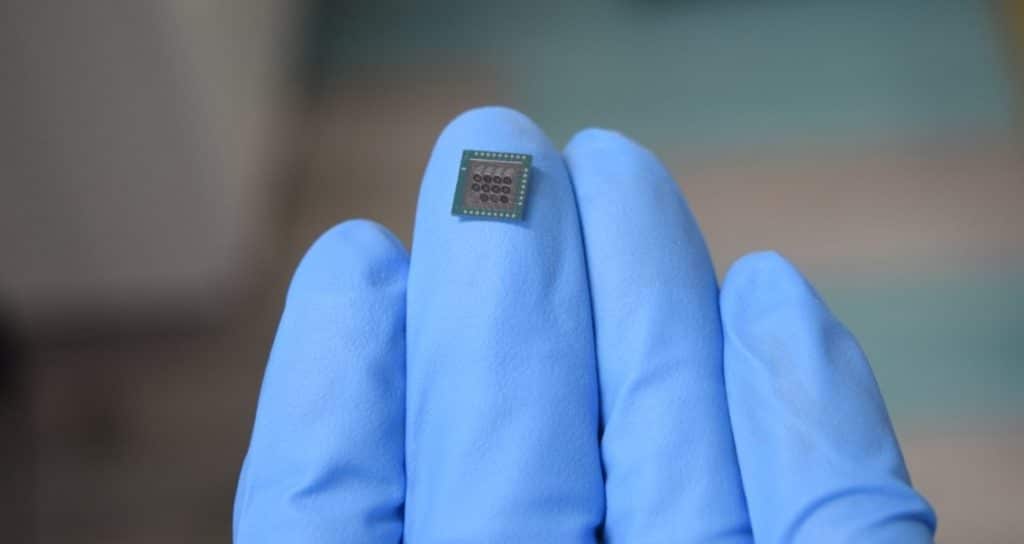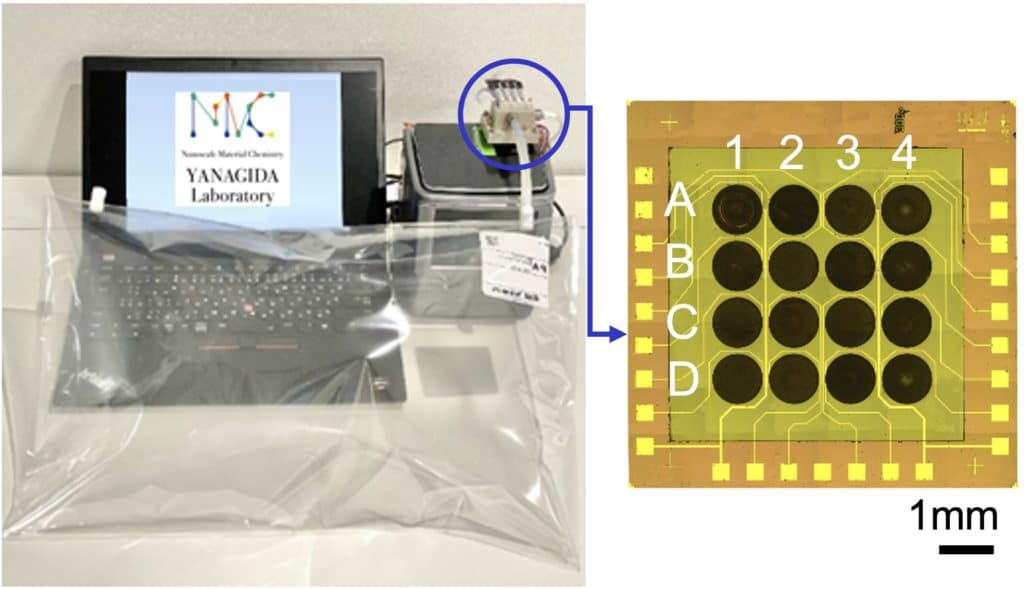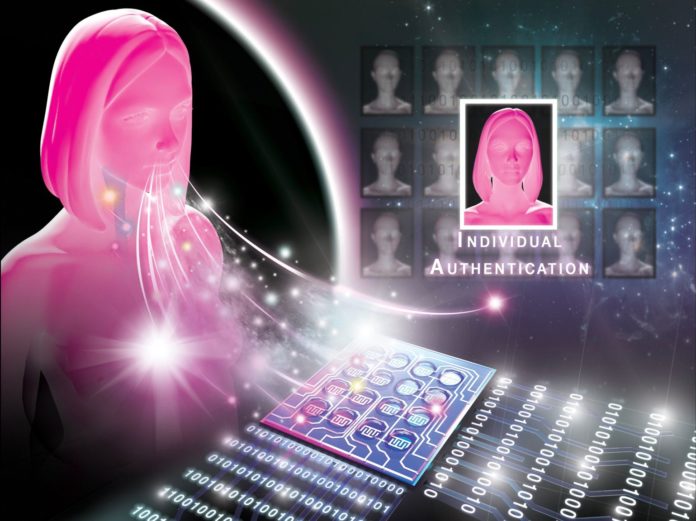Whenever we listen to or think about biometrics, the first things that come to our mind are fingerprints or iris scans which are now common features in our phones. In this age of information and technology, biometric authentication is a critical way to safeguard valuable assets. From the usual suspects of fingerprints, palm prints, voices, and faces to the less common options of ear acoustics and finger veins, there is a variety of biometrics that machines can use to identify you.
In an amazing study, researchers have developed a new potential odorous option for the biometric security toolkit: your breath. In a report published in Chemical Communications, researchers from Kyushu University’s Institute for Materials Chemistry and Engineering, in collaboration with the University of Tokyo, have developed an olfactory sensor capable of identifying individuals by analyzing the compounds in their breath.
An artificial nose, which is combined with machine learning and built with a 16-channel sensor array was found to be able to authenticate up to 20 individuals with an average accuracy of more than 97%.

“These techniques rely on the physical uniqueness of each individual, but they are not foolproof. Physical characteristics can be copied, or even compromised by injury,” explains Chaiyanut Jirayupat, first author of the study. “Recently, human scent has been emerging as a new class of biometric authentication, essentially using your unique chemical composition to confirm who you are.”
The team turned to see if human breath could be used after finding that the skin does not produce a high enough concentration of volatile compounds for machines to detect.
“The concentration of volatile compounds from the skin can be as low as several parts-per-billion or trillion, while compounds exhaled from the breath can go as high as parts-per-million,” continues Jirayupat. “In fact, human breath has already been used to identify if a person has cancer, diabetes, and even COVID-19.”
The team began by analyzing the breath of subjects to see which compounds could be used for biometric authentication. A total of 28 compounds were found to be viable options.
Based on this, they developed an olfactory sensor array with 16 channels, each of which could identify a specific range of compounds. The sensor data was then passed into a machine learning system to analyze the composition of each person’s breath and develop a profile to be used to distinguish an individual.
Testing the system with breath samples from six people, the researchers found it could identify individuals with an average accuracy of 97.8%. This high level of accuracy remained consistent even when the sample size was increased to 20 people.
“This was a diverse group of individuals of differing ages, sex, and nationality. It’s encouraging to see such a high accuracy across the board,” explains Takeshi Yanagida who led the study.

Nonetheless, he admits that more work is needed before it arrives on your next smartphone.
“In this work, we required our subjects to fast six hours before testing,” concludes Yanagida. “We’ve developed a good foundation. The next step will be to refine this technique to work regardless of diet. Thankfully, our current study showed that adding more sensors and collecting more data can overcome this obstacle.”
Journal Reference
- Chaiyanut Jirayupat, Kazuki Nagashima, Takuro Hosomi, Tsunaki Takahashi, Benjarong Samransuksamer, Yosuke Hanai, Atsuo Nakao, Masaya Nakatani, Jiangyang Liu, Guozhu Zhang, Wataru Tanaka, Masaki Kanai, Takao Yasui, Yoshinobu Babaf, and Takeshi Yanagida; Breath odor-based individual authentication by an artificial olfactory sensor system and machine learning. Chemical Communications (2022). DOI: 10.1039/d1cc06384g
